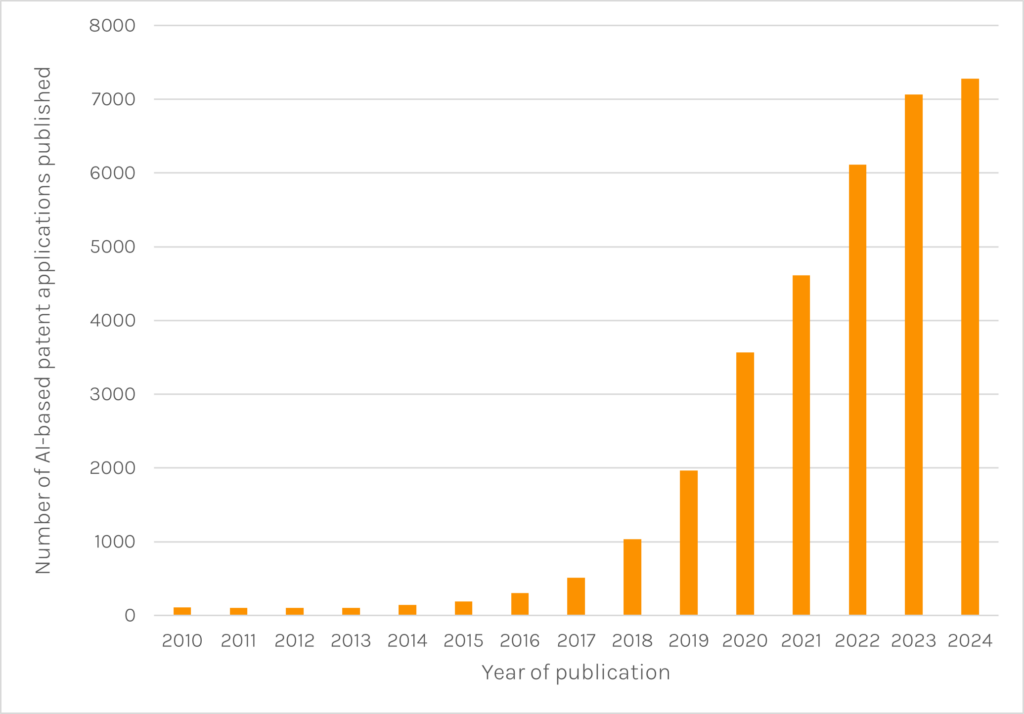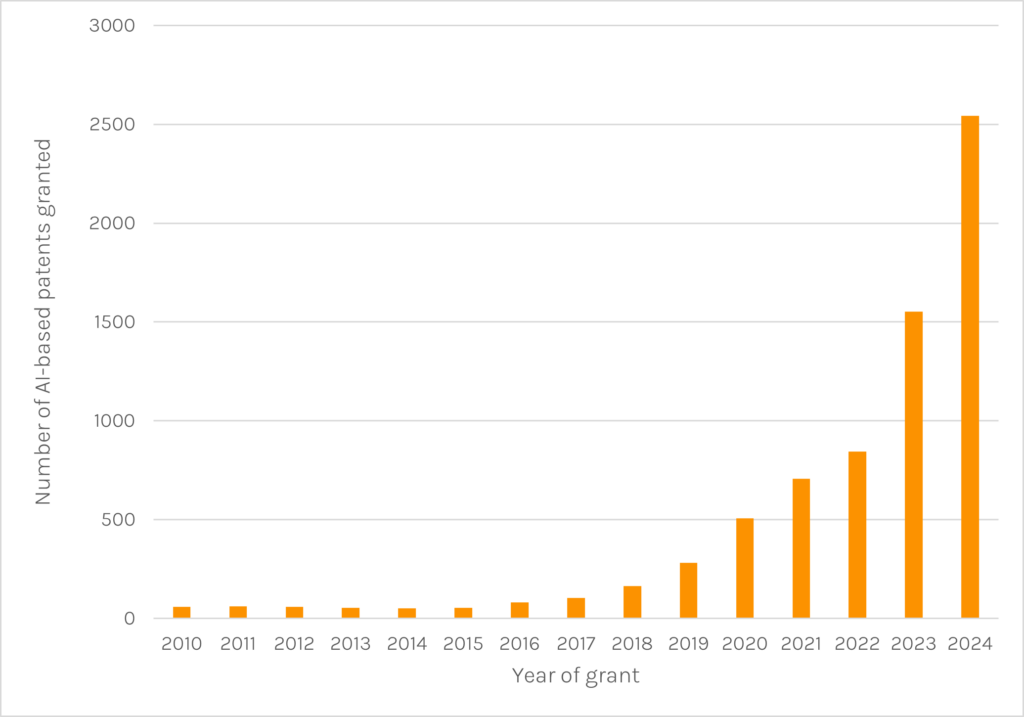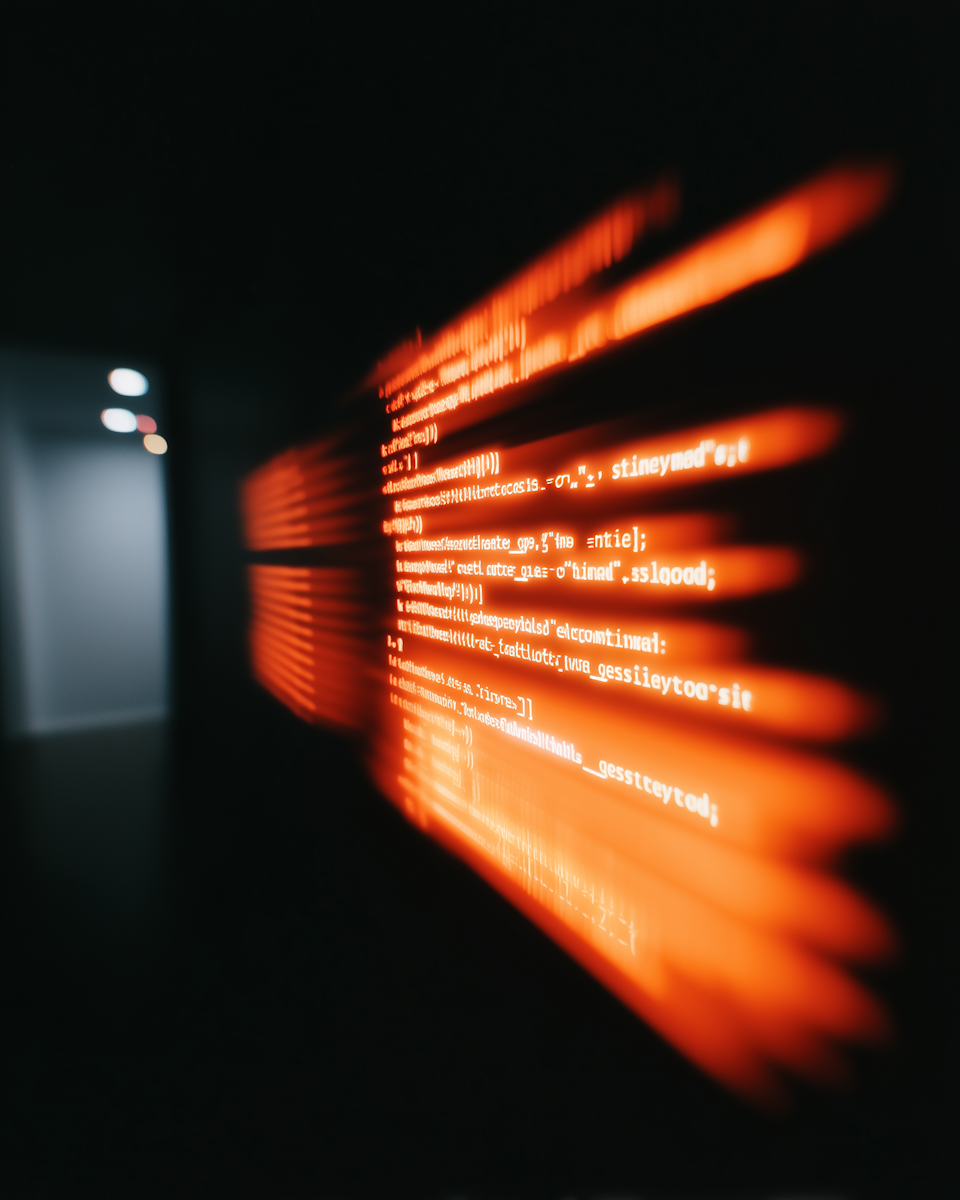15/07/2025
Patent attorneys who specialise in protecting advanced software inventions including AI-based inventions are privileged to work in this exciting field. From a technical perspective, we have had a front row seat in which we have delved into the technical details about AI innovations years before products and services that use these innovations come to the market. From a legal perspective, we have had to develop strategies for protecting these AI innovations and implement feedback from prosecution and litigation to refine these strategies.
We are now in a position to have a good understanding of what we need from inventors to draft a robust patent application for an AI invention that stands a better chance of passing the strict examination process of patent offices across multiple jurisdictions and provides a commercially useful scope of protection.
However, it remains the case that patenting AI is challenging. Certain types of AI inventions are easier to patent than others. Certain jurisdictions are considered to be friendlier than others.
In Europe, we see considerable growth in terms of the number of AI-related patent applications that have been filed. We also see considerable year-on-year growth in terms of the number of patents granted for AI-related inventions. Indeed, the statistics on AI-related patents and patent applications derived from the European Patent Office (EPO) databases indicate that there is consistent growth in this technical field. This growth is demonstrated by the below charts:

Figure 1: Number of European patent applications published per year with claims that refer to any of artificial intelligence, machine learning or a neural network.

Figure 2: Number of European patents granted per year with claims that refer to any of artificial intelligence, machine learning or a neural network.
It is therefore clear that there is significant scope to patent AI inventions even in challenging jurisdictions such as Europe.
Europe
In Europe, the case law on patenting AI inventions is well established and predictable. This predictable approach means it is relatively easy for us to analyse an AI-related invention to identify potential issues and possible routes to success. However, the EPO still has a high bar for patenting AI inventions, as indeed is the case for all software-based inventions.
The claims must include subject matter that provides a technical contribution over the art. The novel technical features are then assessed for inventiveness.
This technical contribution approach is difficult to grasp because developing an AI system for any purpose is seen by most innovators as an inherently technical activity. Anybody doing coding would consider what they are doing is ‘technical’. However, the patent offices are restricted by patent laws that exclude certain kinds of inventions from patentability. Key examples are any inventions that concern business methods or mathematical methods as such.
This means that ideas that solely relate to brand new algorithms that perform pure data processing have a tendency to struggle at the EPO. However, if the algorithm is explicitly tied to a dedicated technical purpose, then the situation is improved.
Generally, the use of AI to control hardware is considered to be clearly technical. Other fields that are generally considered to be technical include telecommunications, image processing, video coding, audio processing and cyber security. If an invention has benefits such as improved efficiency, reduced signalling overhead, improved memory management and/or improved security, the EPO will tend to look more favourable on this type of invention.
In the case of developing a brand-new AI algorithm, it is helpful if this can be tied to a specific technical purpose. Ideally, the AI algorithm would be specially adapted to process a specific type of data and generate a form of improved output data.
United Kingdom
The approach in the United Kingdom is theoretically the same as Europe. At the timing of writing, a significant AI-related case is being considered by the UK Supreme Court. The outcome of this case could have a significant impact on patenting inventions that particularly relate to artificial neural networks (ANNs).
The current approach of the UK patent office means that careful consideration is needed when deciding on filing strategy. The UK patent office has significantly lower fees than the EPO, making the UK a potentially attractive jurisdiction for certain types of AI patent applications.
United States of America
The USA is an incredibly important jurisdiction for AI innovators with its deep talent pool for AI research and development, massive consumer market and significant access to capital. Therefore, patent applicants in other jurisdictions almost always file their patent application in the US.
Traditionally, the US is seen as being more patent friendly than the UK and Europe when it comes to patenting software inventions. However, the case law in the US has evolved over recent years to tighten the patent eligibility requirements. Innovations falling solely within the realm of the so-called ‘business arts’ have faced difficulties in the US for some time.
US case law consistently demonstrates that AI claims are patent eligible. However, we continue to learn about where exactly the boundary lies between patent eligible and patent ineligible subject matter (known as excluded subject matter in Europe). A recent decision of the United States Court of Appeals for the Federal Circuit (referred to as Recentive) indicated that “patents that do no more than claim the application of generic machine learning to new data environments, without disclosing improvements to the machine learning models to be applied, are patent ineligible”.
What are the lessons?
The Recentive decision is of a similar nature to the kind of decisions we see in Europe. In Europe, the mere application of a known machine learning method to a new data environment tends to face difficulties at the EPO. However, there are still some opportunities in this area if the overall purpose of the idea is considered to fall into the ‘technical’ realm.
The EPO generally considers that it is obvious to use AI for improved predictions from data. A patent application that identifies any special adaptations to solve the problem being addressed by the invention may have a greater chance of being granted.
Inventions that relate to purely abstract ideas or business methods tend to face difficulties in all jurisdictions. An example would be using AI to automate something that a human does in a business context.
There is clear value to filing a patent application for advanced software inventions including AI-based inventions. Innovators can use patents to achieve a commercial advantage such as an improved negotiating position when dealing with competitors and investors. Contrary to myth, software inventions are patentable but a judgement call based on experience is needed when assessing an invention for likelihood of patentability. Generally, the EPO is seen as a more challenging jurisdiction than the US for software inventions. However, the recent case law suggests increased convergence towards the EPO ‘high bar’.
In conclusion, drafting patent applications for software inventions that adhere to best practice in Europe is likely a good strategy for seeking and obtaining worldwide patent protection.
This article is for general information only. Its content is not a statement of the law on any subject and does not constitute advice. Please contact Reddie & Grose LLP for advice before taking any action in reliance on it.



